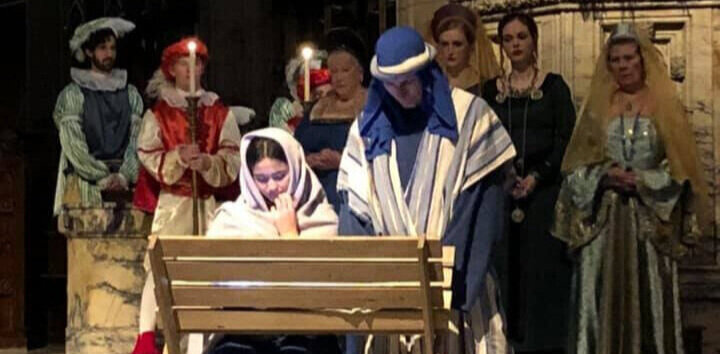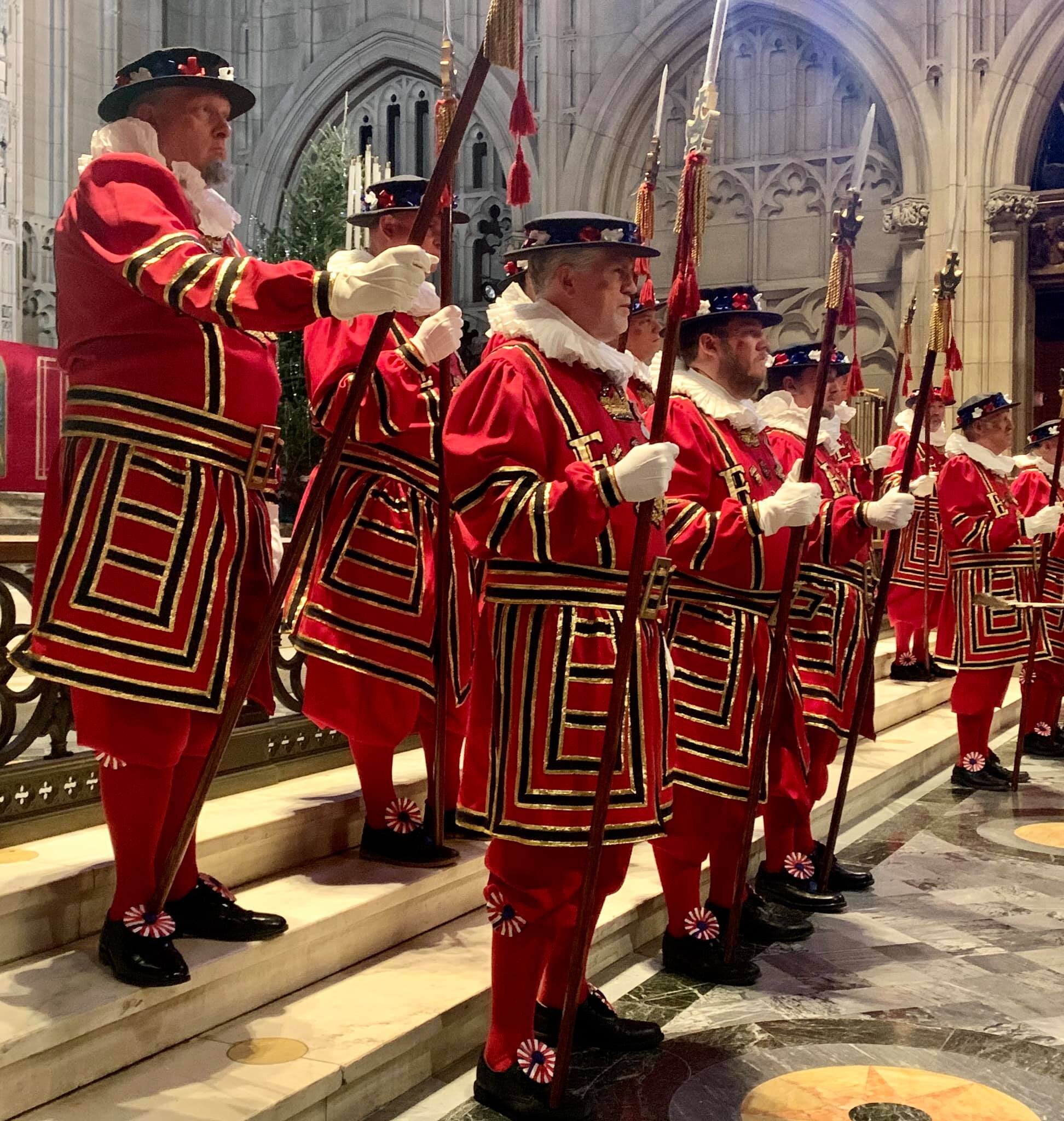
The Tradition
Housed at Trinity Cathedral, Cleveland, since its first performance there in 1961, The Boar's Head and Yule Log Festival is, and has been, a Christmas holiday tradition. It is multi-sensory, appealing to the eye with its color and pageantry, the ear with its varied musical offerings, the nose with the scents of frankincense, fresh baked mince pie and ham, and the mouth, for those who stay after the last performance, in order to taste some of that ham and pie (and perhaps a little plum pudding.)
Rooted deep in pagan times when the boar was the first dish served at a Roman feast, the colorful ceremony of the Boar's Head became a service of praise to the Lord of the universe. Ancient ceremonies associated with the winter solstice were combined with Christian traditions associated with the birth of Christ.
In medieval England, the boar was "king" of the great forests: a ferocious, menacing animal to man. In this context, the boar was a symbolized man’s triumph over evil. The presentation of the boar's head at Christmas symbolized triumph over evil. The Church endowed this custom with symbolic meaning, transforming it to the worship of God, and the triumph of Christ over evil. The ceremony of the Boar's Head became a part of the Christmas celebrations in the great manor houses of the Middle Ages.
No one knows who first planned the Boar's Head Festival, but the procession was in use in the dining hall at Queen's College, Oxford, England, shortly after the University was founded in 1340. During 3 or 4 centuries, the ceremony of the Boar's Head was expanded to include the mince pie and plum pudding, wise men, shepherds, knights, King Wenceslas and his page, sometimes the martyr, Stephen, and the English Yeoman Guards, known as "Beefeaters."
In American colonial days, the Boar's Head and Yule Log Festival was instituted by the Bouton family of Connecticut. They were French Huguenots, who lived for awhile in England. In 1888, a member of the Bouton family established the Festival at the Hoosac School in New York State. In 1940, Christ Church, Cincinnati, secured permission from Hoosac, and Frank Butcher, the music arranger, to present the Boar's Head Festival in Cincinnati. There it was adapted and transferred from its original dining hall presentation, to presentation in a church.
In 1960, Episcopal Bishop Nelson M. Burroughs brought the Boar's Head Festival from Christ Church, Cincinnati, to Trinity Cathedral, Cleveland, with a similar grant of permission. It has been presented as a gift to the people of Cleveland since then, every Christmas season, save for 3. The year 2023 will be the 61st presentation year. Those who gather for this festival are meant to be participants rather than spectators.
For some time after, and including the initial 1960/1961 presentation of the Boar's Head and Yule Log Festival in Cleveland, the Festival was financially supported by the Episcopal Diocese of Ohio. At the present time, the Boar's Head Festival is financially supported by donation only, and continues to seek those donations, which are tax-deductible. The cost of keeping the Festival "afloat" is constantly rising, and costs include facility rental, professional musicians, directors of choir and music, safety force presence, insurance, and costume/prop repair and replacement. (Some of the costumes in use are still original from 1960, and are being gradually replaced, depending on monies available. )
The cast and crew is an all volunteer, multi-denominational group, aged 4 years and up, including choir, performers, and support staff. They come from across Northeastern Ohio.....and some who have moved away, still fly in from other states to participate. The yearly "Festival family" generally numbers around 120 people. (Some participant families have actually had several generations involved through the years.)






